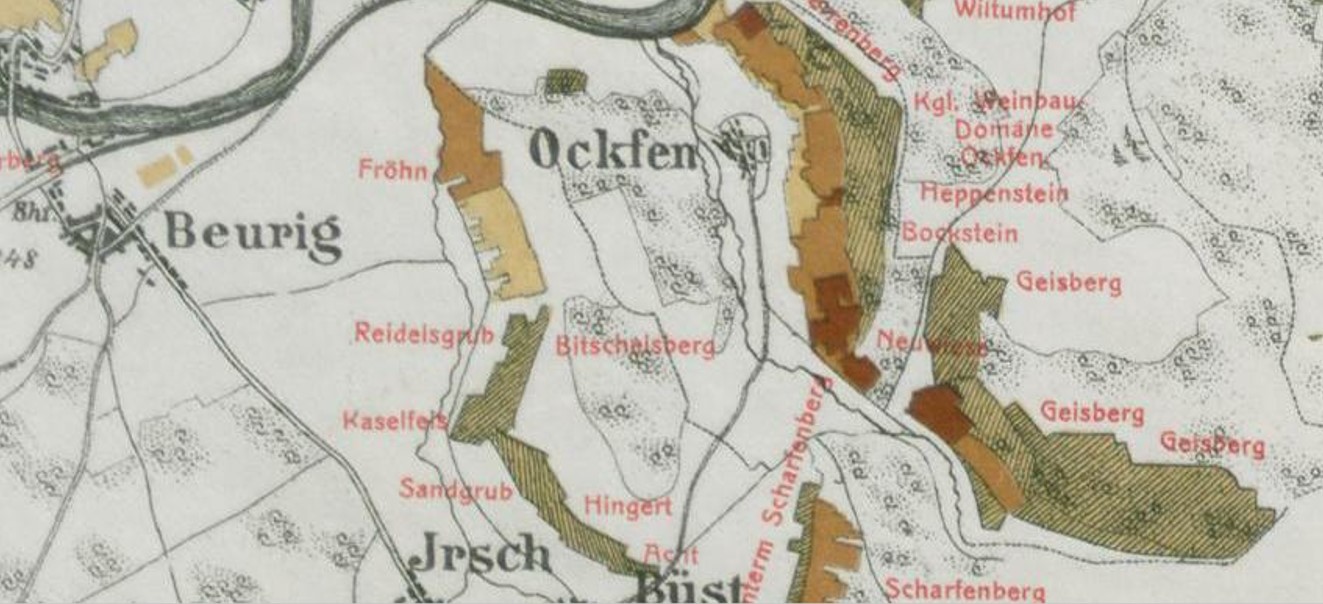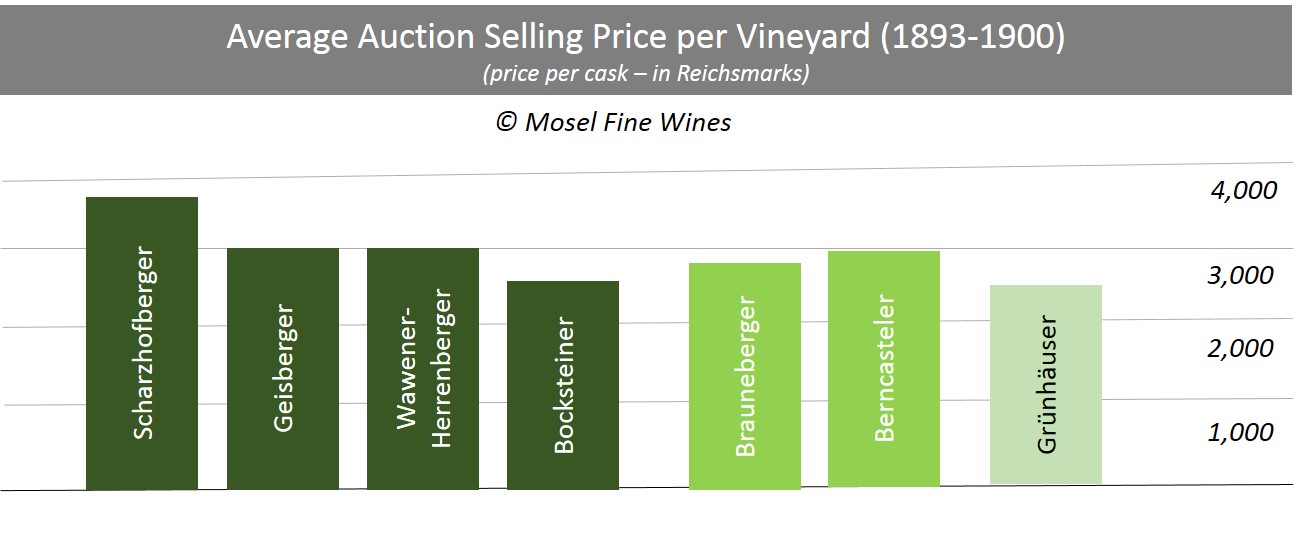May 7, 2015 | News | Vineyards

Did you ever hear about the Geisberg? Probably not. And yet it is a vineyard which regularly commanded the highest prices in Mosel-Saar-Ruwer. Markus Molitor and Van Volxem are about to give it a new life.

The Geisberg is a south to west facing vineyard on a comparatively steep slope tucked away in a side valley in the Saar, behind the Ockfener Bockstein hill. It extends formally over 30 ha but only a mere 5 ha is still under vine today. Much is sold locally, partly in cask.
In top vintages, prices paid for Geisberger equaled or exceeded those of such icons as Scharzhofberger, Brauneberger or Grünhäuser at the turn of the 20th century. Our foraging into old books and catalogues showed that the average price paid per cask in the heyday period (the 1890s) was one of the highest in the region, only "beaten" by Scharzhofberger!

This explains why the central part of the vineyard, despite being a late comer to the Saar scene, was classified in the highest category on the taxation maps, a privilege reserved to only a few vineyards in the whole region.
Many of the big Saar names from the 19th century were active on this hill. This included Rheinart, Keller, Geltz and the predecessors of Dr. Fischer as well as, later, Gebert, von Schorlemer and Friedrich-Wilhelm-Gymnasium. All these makers contributed to the general appreciation of Geisberger wines.

Of course, the appreciation and price levels prevailing a century ago do not necessarily carry over into modern times. Nevertheless, it is a strong indication that there is something special here. Having tasted some older Ockfener Geisberg, among others from 1976 and 1959, we understand the potential of the vineyard: In these ripe vintages, the vineyard still conveys coolness, more so than the Ockfener Bockstein for instance, without giving up on any of the fiery spiciness of Ockfener wines.
It is difficult to say why this vineyard got somewhat forgotten. We suspect a series of factors at play.
As you can see from the extract of the 1906 taxation map above, the Geisberg vineyard was significantly extended around 1900 (from approx. 10 ha to eventually over 50 ha). This did certainly not help its image as much of this new fruit was sold in cask, often at low prices.
Most importantly, many of the leading Estates which were “making” the success of the Geisberg were sold off to “lesser” makers or split up by the 1960s-1980s. Other Estates active in the Geisberg focused their attention on other vineyards (e.g. Weingut Geltz-Zilliken on Saarburger Rausch or Weingut Dr. Fischer on Ockfener Bockstein and, at the time, on Wawern).
In the end, the vineyard simply lost traction and its core part has been laying fallow since many years now.
Earlier this year, Roman Niewodniczanski (owner of the Van Volxem Estate) and Markus Molitor acquired much of the central south-facing part of the hill and already cleared a massive 12 ha areal for replanting.
Roman was over the moon with excitement when we spoke to him about the project: “This is a great opportunity to revive a vineyard which was among the most respected in the heydays of German Riesling. It is only the beginning, much of the work still lies ahead ... but Markus and I are so much looking forward to the results!”
We can only agree. We too cannot wait to taste the result of what has to be one of the most exciting new projects of the last years, and not just in the Saar!
© Text by Mosel Fine Wines "The Independent Review of Mosel Riesling ... and beyond!"
Disclaimer: Mosel Fine Wines is an independent publication and has no commercial relationship with any Estate, association or organization featured in this article.